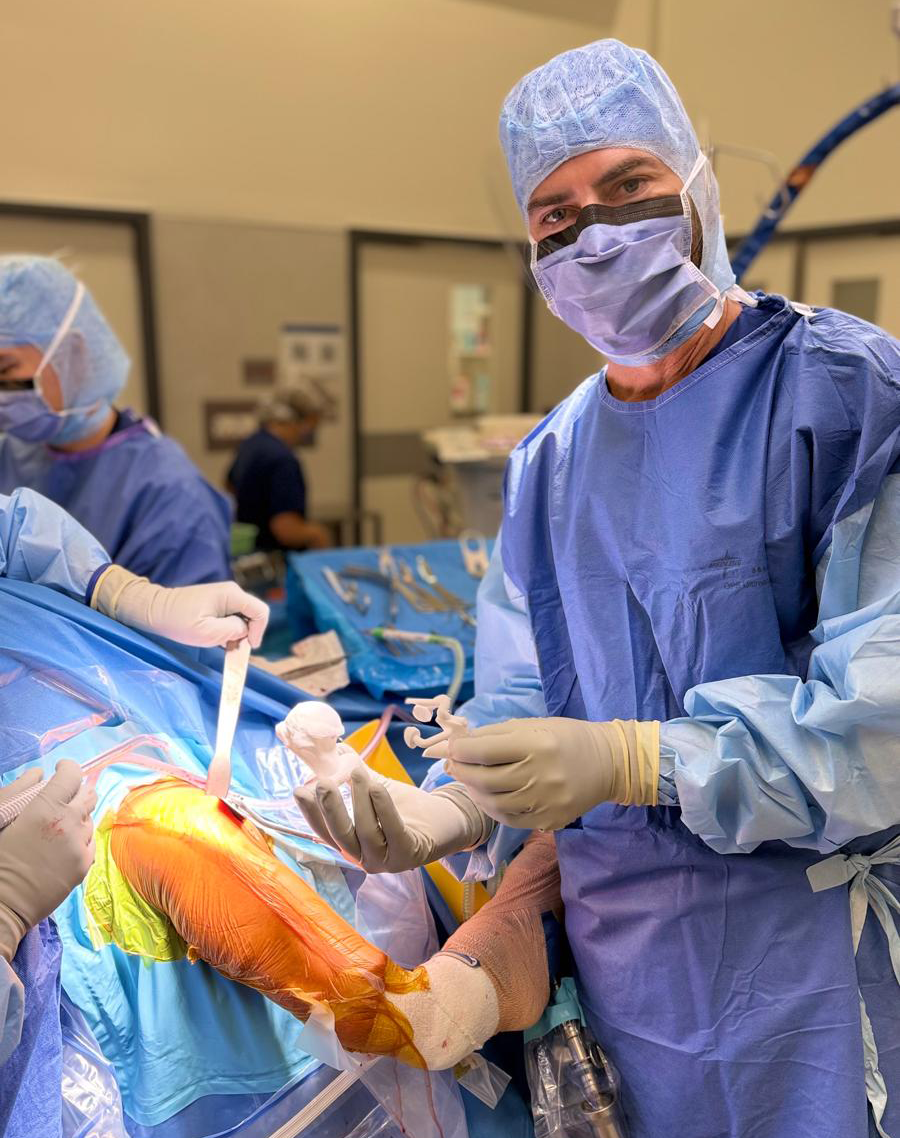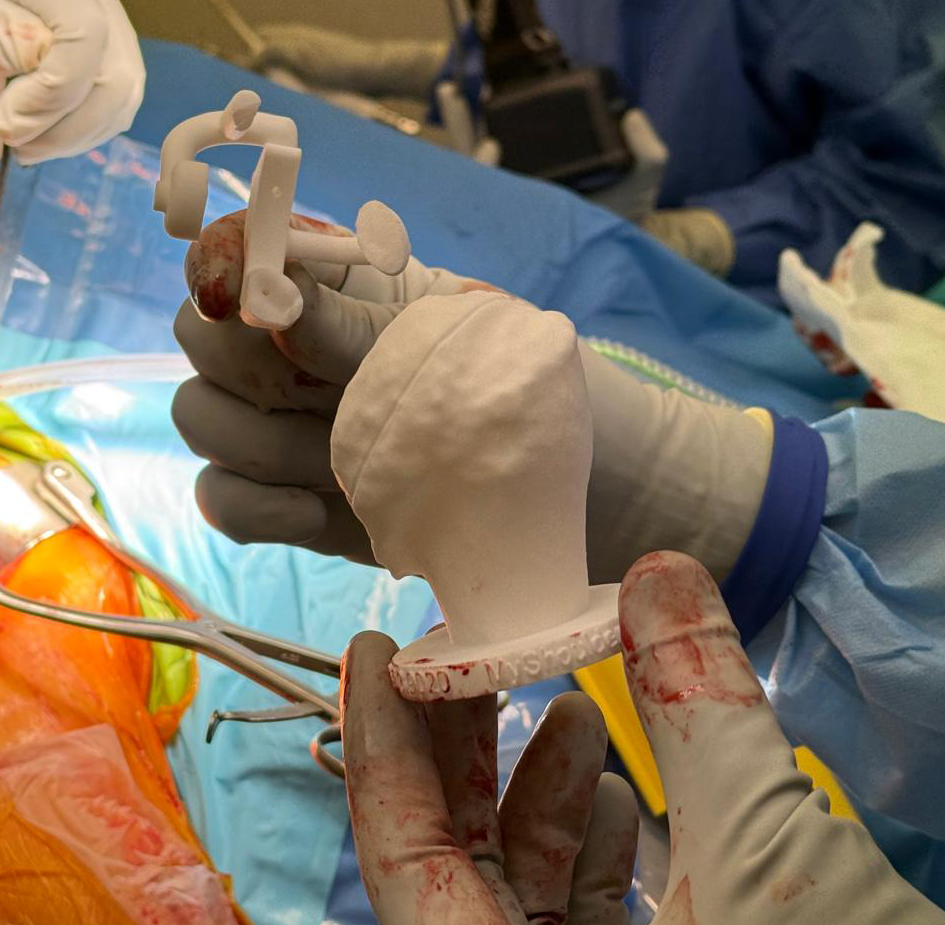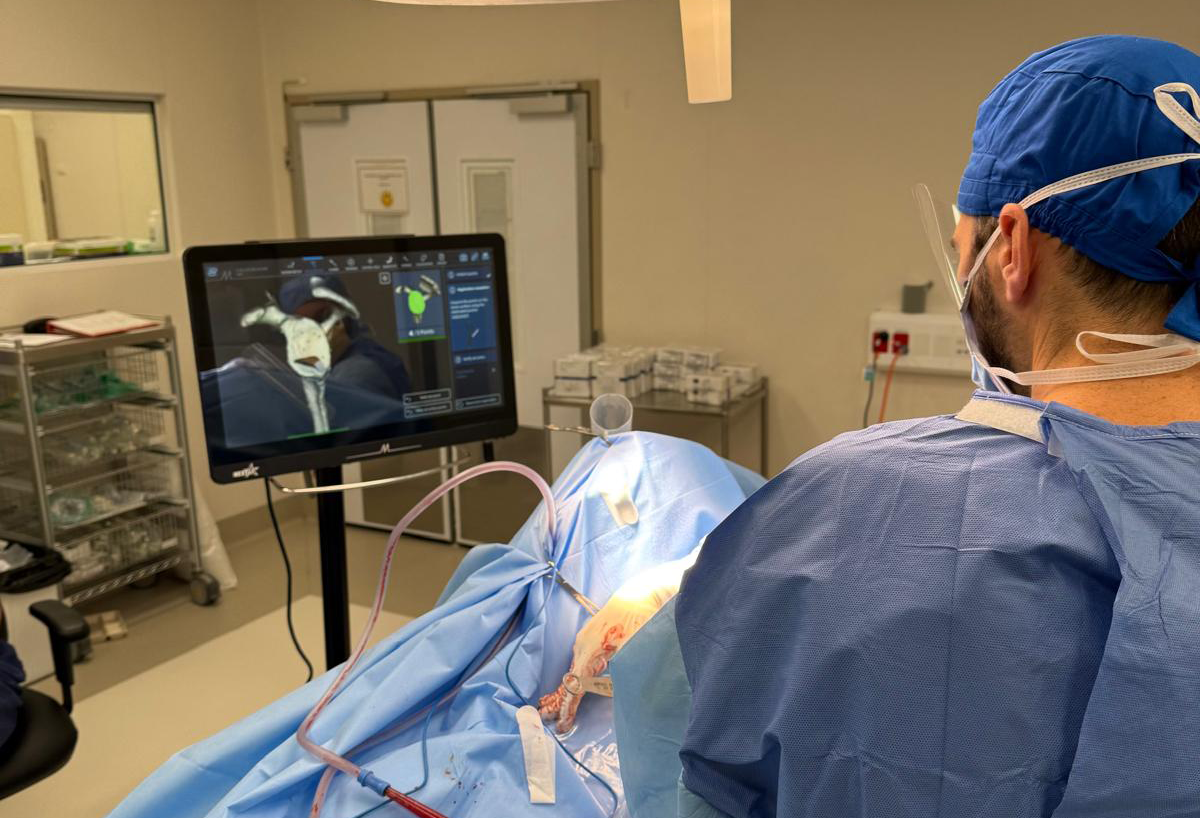Advances in Shoulder Replacement in 2025
For decades, shoulder replacement surgery offered hope for those crippled by arthritis, rotator cuff tears, or severe fractures, but it often came with significant recovery times and limitations. Fast forward to 2025, and shoulder replacement has undergone a revolutionary transformation.
Driven by digital precision, personalised medicine, and minimally invasive techniques, today's procedures offer outcomes once thought impossible. If you're considering shoulder replacement, understanding these 2025 advancements is crucial to making informed decisions about your path to pain-free movement.

A Brief Look Back: The Road to 2025
Shoulder replacement has evolved steadily. Early designs focused on simple ball-and-socket mechanics. The advent of reverse shoulder replacement was a major leap, helping patients with massive rotator cuff tears. Improved implant materials like highly cross-linked polyethylene increased longevity.
However, planning relied heavily on standard X-rays and surgeon experience, and approaches often required large incisions with substantial muscle disruption. 2025 marks the culmination of integrating cutting-edge technology directly into the surgical workflow, moving from generalized solutions to truly personalized care.
Advancing Shoulder Replacement with Patient-Specific 3D Guides

Modern shoulder replacement surgery has evolved significantly over the last decade, with technology now playing a central role in improving precision and outcomes. One of the most powerful tools now available to surgeons is the use of Patient-Specific Instrumentation (PSI)—custom-made 3D printed surgical guides designed to match a patient’s unique anatomy.
These guides are created using high-resolution CT scans and advanced planning software, which allow for detailed visualization of the patient’s shoulder in three dimensions before surgery even begins. By planning the procedure digitally, the surgeon can identify key anatomical landmarks, assess bone quality, and simulate optimal implant positioning. The resulting 3D-printed guide is tailored precisely to the patient’s shoulder and used intraoperatively to guide the placement of components with sub-millimetre accuracy.
This level of precision is particularly valuable in shoulder arthroplasty, where even minor variations in implant placement can impact joint function, implant longevity, and soft tissue tension. PSI helps ensure accurate version, inclination, and offset of the glenoid component, especially in complex deformities or cases with significant bone loss.
Dr Oscar Brumby-Rendell’s Bespoke Approach to Shoulder Replacement
At the Adelaide Shoulder & Upper Limb Clinic, Dr Oscar Brumby-Rendell incorporates patient-specific 3D guides into every shoulder replacement procedure. This commitment ensures that each surgery is tailored to the individual—respecting the unique bony anatomy and joint mechanics of every patient.

Dr Brumby-Rendell’s use of 3D printed guides reflects a broader philosophy: that shoulder replacement should not be one-size-fits-all. By combining advanced surgical planning with cutting-edge technology, he delivers a bespoke, anatomically-accurate reconstruction that supports long-term function and faster recovery. Patients can feel confident knowing their procedure is based on detailed planning and executed with the highest level of precision
3D Preoperative Planning
Three-dimensional (3D) preoperative planning is now the standard of care. Virtually every shoulder replacement is planned on a computer before surgery. The process starts with a CT (or MRI) scan of the patient’s shoulder. Software then constructs a 3D model of the scapula (socket) and humerus (ball). The surgeon can manipulate this model to understand the patient’s anatomy – including deformities, bone loss, and the shape of the joint.
Using the 3D model, the surgeon virtually “rehearses” the operation. They can select the best implant type and size, and position it in the virtual shoulder to optimize fit. This planning lets the surgeon anticipate challenges such as severe arthritis or unusual bone shape. For example, Dr. Ben Mayo explains that 3D planning provides a “detailed view of your shoulder anatomy” so the surgical plan can be customized to each patient. This cuts guesswork: instead of making decisions in the operating room, many choices (implant size, alignment angles, bone cuts) are settled preoperatively.
Today’s consensus is that 3D planning significantly improves accuracy. A comprehensive review notes that 3D CT planning “guarantees precise visualization of glenoid version and inclination,” allowing surgeons to detect the need for bone augments or corrections. Indeed, nearly all shoulder surgeons now use it: as of 2025, “three-dimensional preoperative planning is the most widely utilized technology in shoulder arthroplasty”. Studies consistently show better implant positioning with planning than without, which in theory should improve the longevity of the replacement.
Key benefits of 3D planning include:
- Personalized surgical plan: The surgeon tailors every step to the patient’s unique anatomy.
- Enhanced precision: Virtual rehearsal leads to more accurate bone cuts and implant placement.
- Improved outcomes: By optimizing the plan, 3D planning can boost patient satisfaction and function after surgery.
- Reduced complications: Anticipating challenges (bone defects, implant fit) ahead of time helps avoid intraoperative problems.
In short, 3D planning makes shoulder replacement safer and more effective. It is an everyday part of the workflow: after planning, the data can feed into navigation systems or guide design (PSI) for the actual operation.
3D Printed Models
Alongside virtual planning, 3D-printed models are increasingly used. From the preoperative CT, a physical replica of the patient’s shoulder (often the scapula with a part of the humerus) can be printed in hard plastic. Surgeons hold this model like an anatomical mannequin before surgery. They can practice the operation, measure the anatomy, and even simulate the implant positioning.
Clinical reports confirm the value of 3D-printed models. In shoulder arthroplasty, authors have found that having a 3D model “improves the positioning of the glenoid component”. In practice, this means the plastic implant socket can be aligned more accurately when surgeons have held a model of the real bone. The literature also notes objective benefits: shorter operative times, better preoperative understanding, and the ability to create custom tools when using 3D-printed models.
For example, one review concluded that across orthopedic surgery, “3D printed models… provide objective improvements to preoperative planning and the surgical procedure itself,” including shorter intraoperative time and development of patient-specific instruments. In shoulder surgery specifically, the 3D models help with surgeon training and allow teams to visualize complex fractures or deformities exactly. These hands-on models complement the computer plan: by 2025, any surgeon dealing with a difficult shoulder is likely to order a 3D-printed shoulder model for planning.
CT Navigation in Surgery
Once the plan is set, intraoperative CT-based navigation can put that plan into action. Navigation systems use the patient’s CT data during surgery. Reflective markers or sensors on the patient’s bones link the physical anatomy to the 3D plan. The surgeon then sees, on a screen, the real-time position of instruments relative to the virtual model. This “GPS for the OR” guides each cut and screw to the pre-planned location.
Navigation has been shown to improve precision. A 2025 study reported that navigated reverse shoulder replacements required fewer screws (though longer ones) while achieving stable fixation. In practice, navigation “optimizes glenoid component placement” and reduces the risk of malalignment. Research suggests that navigation-assisted techniques allow surgeons to use the ideal screw trajectories and lengths – using, for example, “fewer but longer screws” for better fixation. One benefit is saving bone stock: by using longer screws securely instead of more shorter screws, the bone is preserved.

But by 2025, surgeons has accepted navigation as a valuable tool for complex shoulders. Reviews note that navigation “provides real-time guidance to improve surgical accuracy and consistency”. In summary, CT navigation takes the 3D plan and makes it a reality in the OR, enhancing accuracy and (in some studies) possibly reducing complications by ensuring the implant matches the preoperative plan.
Minimally Invasive Shoulder Joint Replacement
Traditionally, shoulder replacements required a long incision (often 15–20 cm) across the shoulder. In recent years, surgeons have developed minimally invasive approaches that use much smaller incisions. For example, a minimally invasive shoulder arthroplasty may use only a ~5 cm incision – roughly the size of a hand. Specialized retractors and instruments allow the surgeon to reach the joint through this keyhole opening.
The advantages are clear. As Dr. Patrick Jost notes, minimally invasive shoulder replacement “causes less damage to the soft tissues and underlying muscles,” which means less pain and faster recovery. In practice, patients have smaller scars and regain motion more quickly than with a big incision. Also, with less tissue dissection, blood loss is lower and there tend to be fewer wound complications.
Benefits of minimally invasive shoulder replacement include:
- Tiny incision (about 5 cm vs. 17 cm in traditional surgery).
- Less tissue trauma, preserving muscle and tendons.
- Faster recovery and less pain, allowing patients to rehab sooner.
- Smaller scar and fewer complications, due to minimal exposure.
However, MIS is not suitable for all patients. If the shoulder has a lot of bone loss or deformity, a longer incision may still be needed for exposure. When applicable, though, minimally invasive techniques are increasingly preferred for appropriate cases, delivering patient comfort and quicker return to activity.
Learn more about Minimally Invasive Shoulder Joint Replacement by visiting our treatment page here.
The Future of Shoulder Replacement
Looking beyond 2025, the horizon is bright for shoulder arthroplasty. Emerging technologies promise even more precise and personalized surgery. Two trends stand out:
- Augmented Reality (AR) and Robotics: Experts predict that overlaying navigation data through AR headsets and using robotic arms will become a reality in the shoulder OR. For example, AR could project the 3D plan onto the surgical field, while a robotic arm could help execute bone cuts exactly as planned. Early studies suggest that “immersive technologies like augmented reality” and robots will further enhance surgeons’ ability to handle complex anatomy.
- Advanced Custom Implants: The idea of 3D-printing not just guides but the implants themselves is gaining ground. Soon we may see fully patient-specific shoulder implants (metal components printed to match a patient’s bone) and even smart implants with sensors. Implant materials will continue to improve (for example, better bearings or coatings) to last longer inside the body.
In summary, by 2025 shoulder replacement is already a high-tech field. Surgeons use detailed digital plans, custom guides, and navigation to fit implants optimally. The next few years may bring robotics and AR into routine use, making the procedure even more precise. All these advances aim toward one goal: every shoulder replacement should move the patient pain-free for as long as possible.
